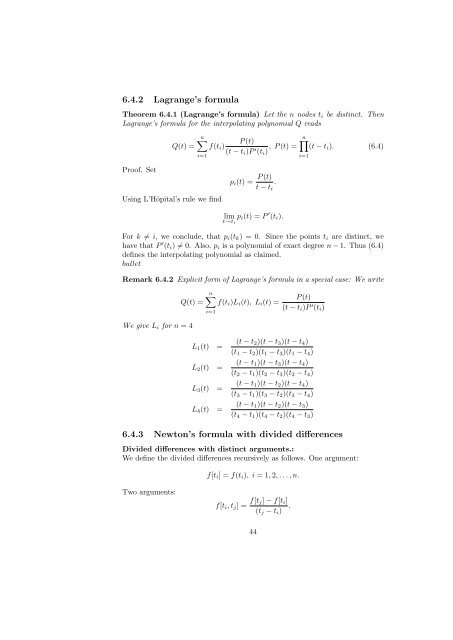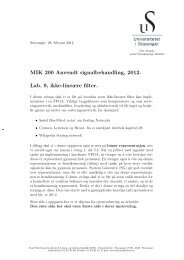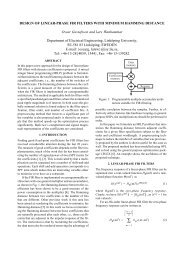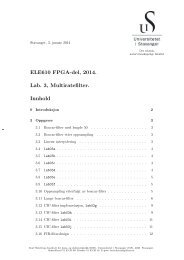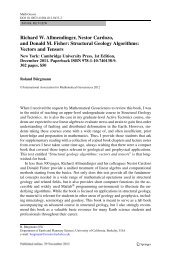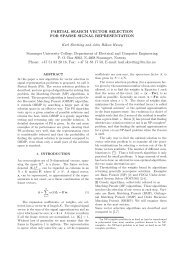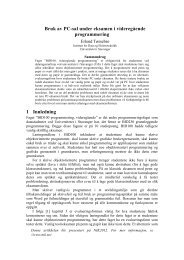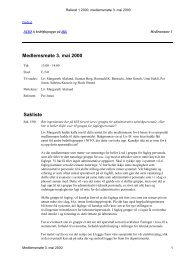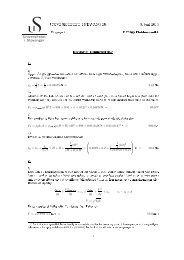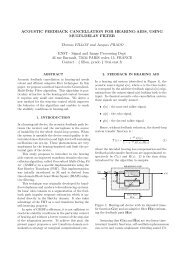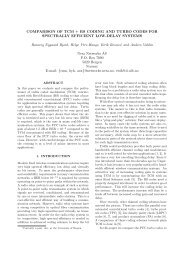Lecture Notes Course à MA 190 Numerical Mathematics, First ...
Lecture Notes Course à MA 190 Numerical Mathematics, First ...
Lecture Notes Course à MA 190 Numerical Mathematics, First ...
You also want an ePaper? Increase the reach of your titles
YUMPU automatically turns print PDFs into web optimized ePapers that Google loves.
6.4.2 Lagrange’s formulaTheorem 6.4.1 (Lagrange’s formula) Let the n nodes t i be distinct. ThenLagrange’s formula for the interpolating polynomial Q readsQ(t) =n∑ P (t)nf(t i )(t − t i )P ′ (t i ) , P (t) = ∏(t − t i ). (6.4)i=1i=1Proof. SetUsing L’Hôpital’s rule we findp i (t) = P (t)t − t i.lim p i (t) = P ′ (t i ).t→t iFor k ≠ i, we conclude, that p i (t k ) = 0. Since the points t i are distinct, wehave that P ′ (t i ) ≠ 0. Also, p i is a polynomial of exact degree n − 1. Thus (6.4)defines the interpolating polynomial as claimed.bulletRemark 6.4.2 Explicit form of Lagrange’s formula in a special case: We writeQ(t) =We give L i for n = 4n∑P (t)f(t i )L i (t), L i (t) =(t − t i )P ′ (t i )i=1L 1 (t) =L 2 (t) =L 3 (t) =L 4 (t) =(t − t 2 )(t − t 3 )(t − t 4 )(t 1 − t 2 )(t 1 − t 3 )(t 1 − t 4 )(t − t 1 )(t − t 3 )(t − t 4 )(t 2 − t 1 )(t 2 − t 3 )(t 2 − t 4 )(t − t 1 )(t − t 2 )(t − t 4 )(t 3 − t 1 )(t 3 − t 2 )(t 3 − t 4 )(t − t 1 )(t − t 2 )(t − t 3 )(t 4 − t 1 )(t 4 − t 2 )(t 4 − t 3 )6.4.3 Newton’s formula with divided differencesDivided differences with distinct arguments.:We define the divided differences recursively as follows. One argument:f[t i ] = f(t i ), i = 1, 2, . . . , n.Two arguments:f[t i , t j ] = f[t j] − f[t i ].(t j − t i )44


